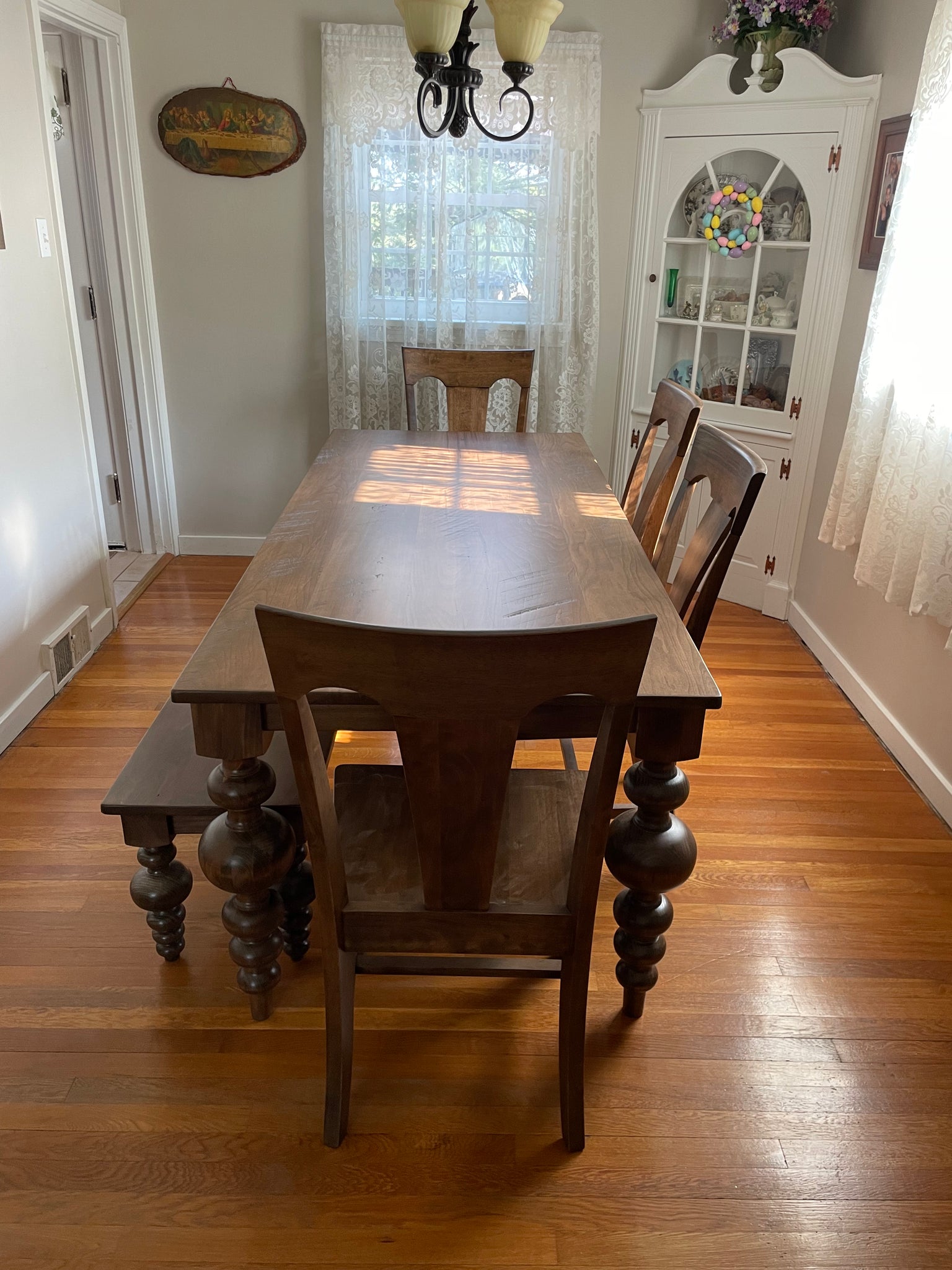How to Choose the Perfect Dining Room Table Legs for Your Home
How to Choose the Perfect Dining Room Table Legs for Your Home
Blog Article
Professional Tips for Putting Up Eating Room Table Legs for Maximum Stability
When it comes to setting up eating area table legs, accomplishing maximum security is vital for both performance and aesthetic appeals. What certain strategies can improve stability even further?
Select the Right Legs
When picking the proper legs for your dining-room table, it is important to consider both functionality and looks. The legs you select will considerably impact the total design and stability of the table. Examine the table's meant use; if you expect constant gatherings, tougher legs, such as those made from solid timber or steel, might be extra ideal, as they offer raised longevity and assistance.
Conventional dining tables usually range from 28 to 30 inches in height, so make sure the legs line up with this requirement for convenience. Conical legs can include a modern touch, while turned legs might share a much more classic aesthetic.

Select Appropriate Hardware
Exactly how can the right hardware enhance the security and longevity of your dining-room table? The selection of appropriate equipment is important to making sure that the legs of your table are safely attached and able to stand up to normal usage. High-grade screws, screws, and brackets supply the necessary stamina to support the weight of the table, along with any type of additional lots positioned upon it throughout meals or celebrations.
When choosing screws, select those made from sturdy materials such as stainless steel or brass, which withstand corrosion and preserve honesty with time. The size of the screws is equally crucial; they should penetrate deeply into the table's structure without endangering honesty. For bolted links, consider making use of lock washing machines to stop loosening as a result of vibration or activity.
In addition, utilizing edge brackets can include added support, specifically for bigger tables or those with heavier tops. These brackets disperse weight equally and help preserve the table's form. Ensuring that the equipment you pick is proper for the certain materials of your table will additionally enhance its general stability and long life, permitting you to enjoy your eating experience for several years to come.
Ensure Appropriate Placement
Correct positioning of eating space table legs is crucial for both aesthetic charm and practical stability. To attain optimum positioning, begin by measuring the range from the table's edges to the leg attachment factors.
Utilize a level throughout installation to verify that each leg is vertical to the tabletop. It is recommended to note the wanted leg settings on the bottom of the table with a pencil or concealing tape prior to securing them.
Additionally, verify the placement after the preliminary screws are tightened up, as adjustments might be needed prior Continue to fully securing the equipment. By prioritizing appropriate placement, you not just enhance the table's general design yet likewise make certain that it continues to be practical and steady for years to find.

Think About Weight Circulation
After making certain appropriate alignment of the dining-room table legs, it is essential to think about weight distribution to boost stability and functionality. dining room table legs. Correct weight circulation is crucial in preventing making sure and wobbling that the table can sustain its designated load without risk of tipping or breaking down
When positioning the legs, ensure they are placed at equivalent ranges from the facility of the table to uniformly distribute the weight throughout the framework. Think about the weight of the tabletop and any items that will frequently hinge on it, such as ornamental items or tabletop devices. Tables with larger surfaces need to ideally have legs located closer to the edges, as this makes best use of the base of assistance and lessens the risk of instability.
Furthermore, if the table is planned for usage in a high-traffic location, take into consideration using much heavier materials for the legs or adding maintaining elements, such as cross-bracing or a lower rack - dining room table legs. These modifications can help preserve balance and protect against changing during usage. Eventually, a well-considered weight circulation technique will additional resources significantly enhance the table's general efficiency, guaranteeing it stays a appealing and practical focal point for your eating space
Examination Stability Prior To Usage
Checking the security of the dining area table before use is a crucial action that should not be forgotten. If the table reveals instability, recognize the legs or joints that might need modification.
Next, examine that all bolts and screws are tightened properly. Loose connections can cause instability and potential damages gradually. If essential, utilize wood glue on joints to enhance stability, ensuring to permit ample drying out time.

Conclusion
To conclude, the setup of eating room table legs needs mindful factor to consider of products, hardware, alignment, and weight circulation to achieve optimum security. By picking tough legs and top notch bolts, guaranteeing exact alignment, and dispersing weight equally, the structural integrity of the table can be dramatically boosted. Carrying out a stability examination before routine use even more makes certain that the table will endure day-to-day pressures, consequently providing a reliable and safe eating experience.
When it comes to mounting eating area table legs, achieving maximum stability is critical for both capability and looks. The legs you pick will significantly impact the general style and stability of the table (dining room table legs). Common eating tables generally range from 28 to 30 inches in height, so guarantee the legs align with this standard for comfort.Proper alignment of dining space table legs is vital for both visual charm and useful stability.In conclusion, read this the setup of eating area table legs requires cautious factor to consider of products, placement, weight, and hardware distribution to attain optimum stability
Report this page